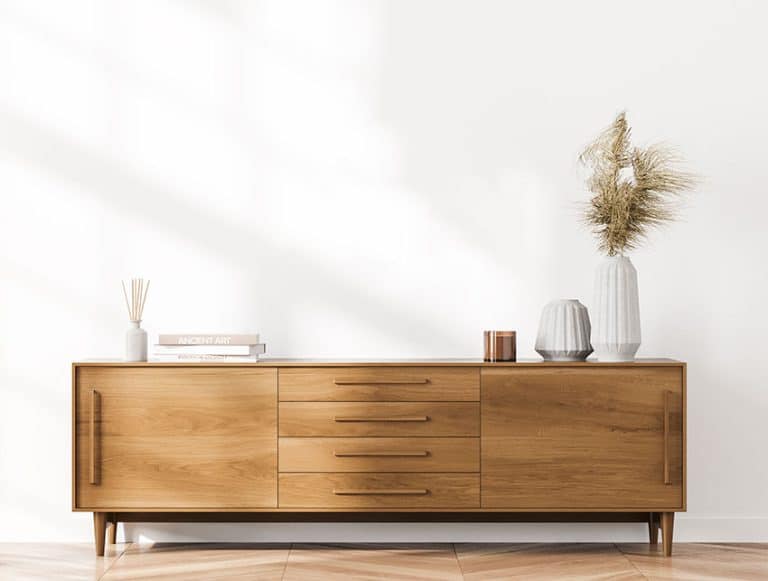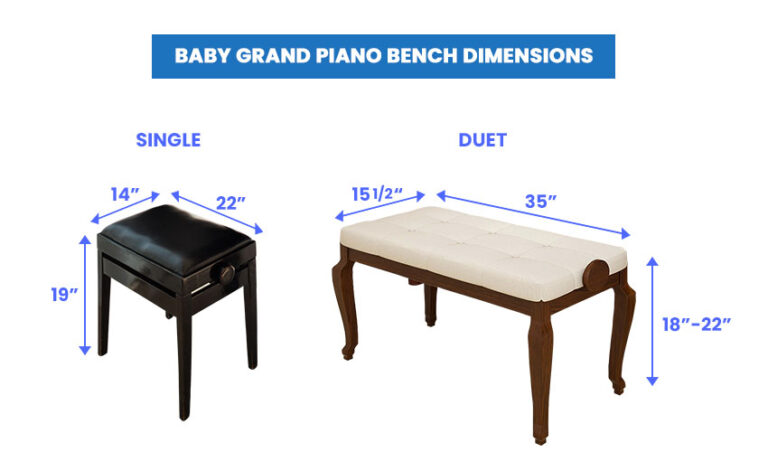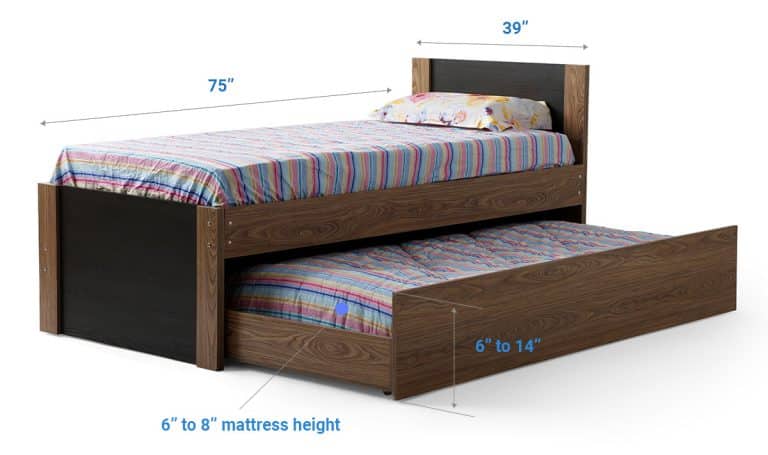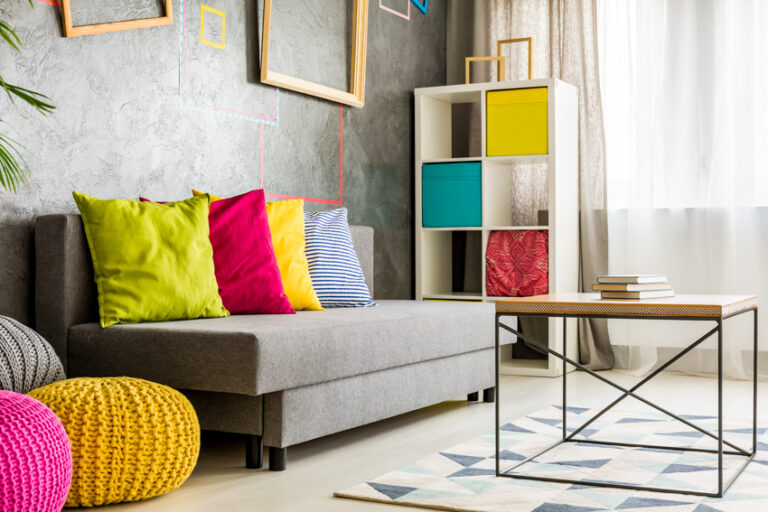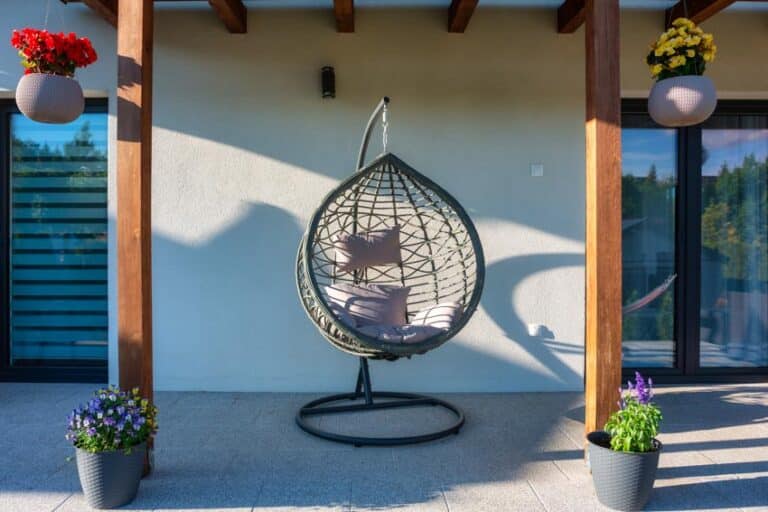Indian Wood Furniture (Types, Benefits & Uses)
Discover all you need to know about Indian wood furniture, from the popular types, their benefits, uses, durability, and which wood material is best to use for furniture.
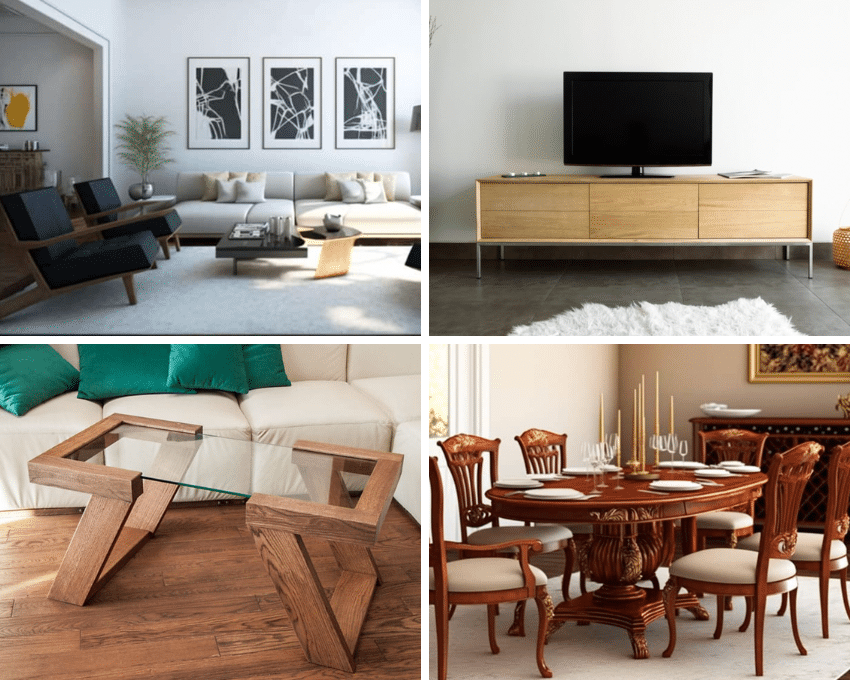
Even though the designs and construction of furniture have developed over time, Indian wood continues to be the most desirable among all construction materials. The robustness and excellent artistic value of handcrafted hardwood furniture are well-known worldwide.
Wooden furniture has consistently been a key component of home interior design ideas despite their constant development. Indian woods are renowned for the reliability they provide to the furniture.
Nevertheless, different types of wood are utilized to create furniture for Indian houses. What kind of wood is best for furniture, then? In general, when purchasing furniture, you must be mindful of the benefits and uses of the different types of Indian wood.
Quicklook: Wood Types In India For Furniture
• Mango Wood
• Teak Wood
• Marandi Wood
• Sissoo Wood
• Rosewood
• Sandalwood
• Mahogany
• Oak
• Deodar
• Satin
• Jackwood
• Sal Wood
• Mulberry Wood
• Coconut Wood
Types of Wood for Furniture in India
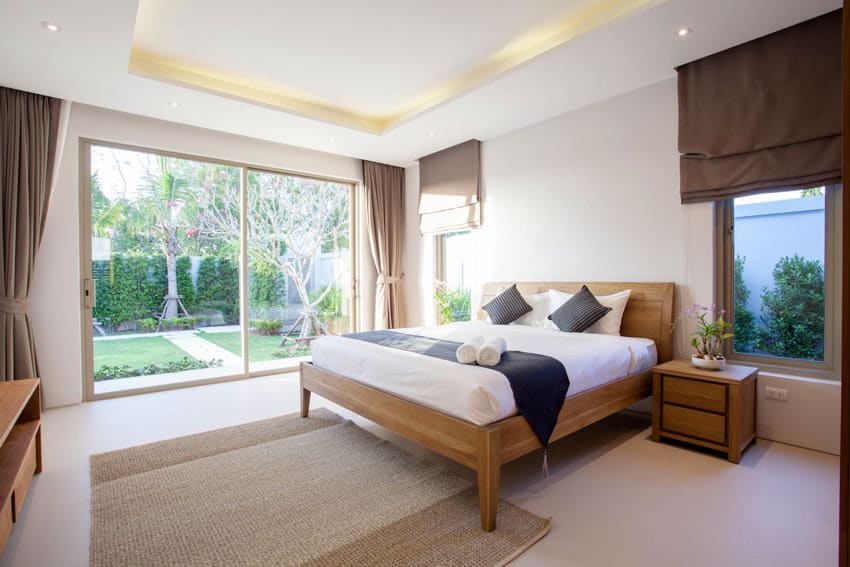
Mango Wood
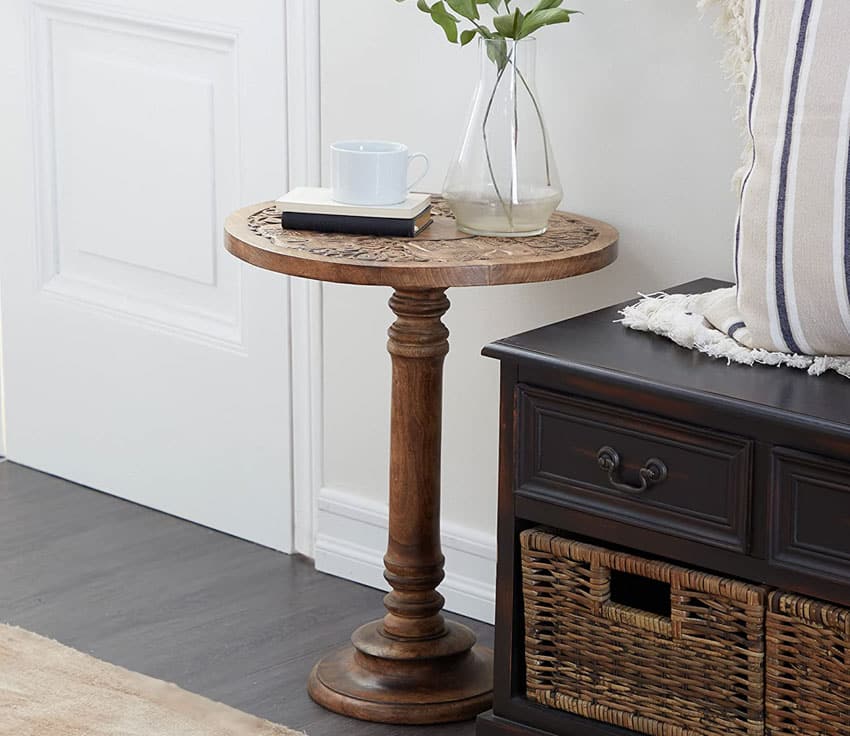
Mango trees are indigenous to East Asia, Myanmar, and India. Mango has been most frequently developed in India but is also cultivated in China and Kenya. Mango wood’s natural hue is often golden brown, even though other varieties have a brighter yellow hue or have black or reddish streaks running across them.
Aside from that, mango is an excellent alternative for interior home embellishments since it is quite straightforward compared to many other hardwoods.
Because it is soft, it is simple to cut, mold, and carve elaborately. Mango is also a fantastic material for outdoor furnishings because it is incredibly water-resistant.
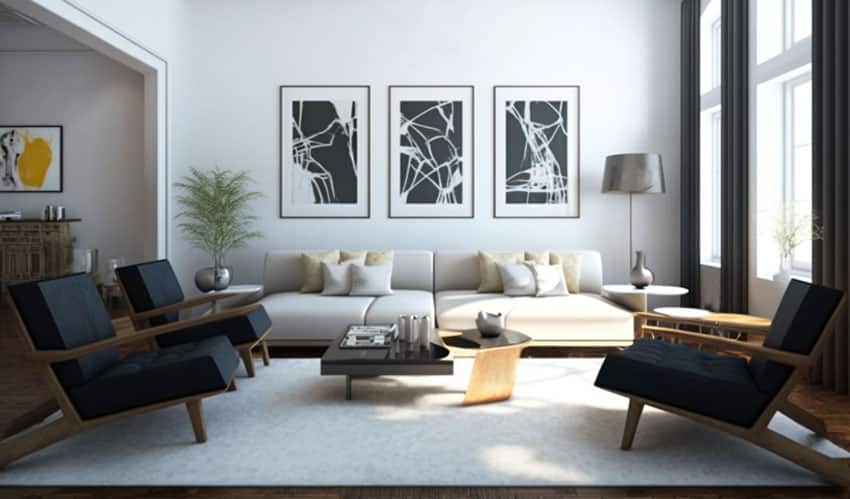
Indeed, mango requires less maintenance, which is fantastic. However, in hot temperatures, it is easy to become dehydrated.
Minor cracks can develop instantly if the wood is subjected to heat elements or the sun. It would be ideal to keep this moisturized with a furniture polisher to prevent this from happening.
Advantages of Mango Lumber
• Amazing Longevity and Durability: Mango is a long-lasting hardwood ideal for personalized interior home embellishment creations. It shares the same strength as oak and ash. It does not deteriorate rapidly and ages gracefully, giving you confidence that your furniture will survive for decades.
• Very Sustainable: Mango wood remains extremely sustainable because it is grown as a fruit tree. The trees attain maturity quite rapidly for hardwood at approximately 15 years. Mango farmers cultivate new trees every 7 to 15 years before the aged trees die, resulting in a sustainable process of plantation and harvesting.
• Relatively Affordable: Mango is much less expensive than other hardwood types because these trees are sustainable. Once the tree is down, it takes little processing, which keeps costs low.
• Gorgeous Appearance: Mango is a terrific alternative for people searching for special types of wood for furniture because of its distinct texture, pattern, and gorgeous graining. Because of the diversity in wood hue, you are assured of having a one-of-a-kind piece of furnishing.
Uses of Mango Lumber
• Indoor Furniture: Bed frames, tables, drawers, cabinets, door frames, chairs
• Outdoor Embellishments: Outdoor dining tables and chairs, outdoor chaises, and any other outdoor lounge space pieces that come into contact with water
Teak Wood
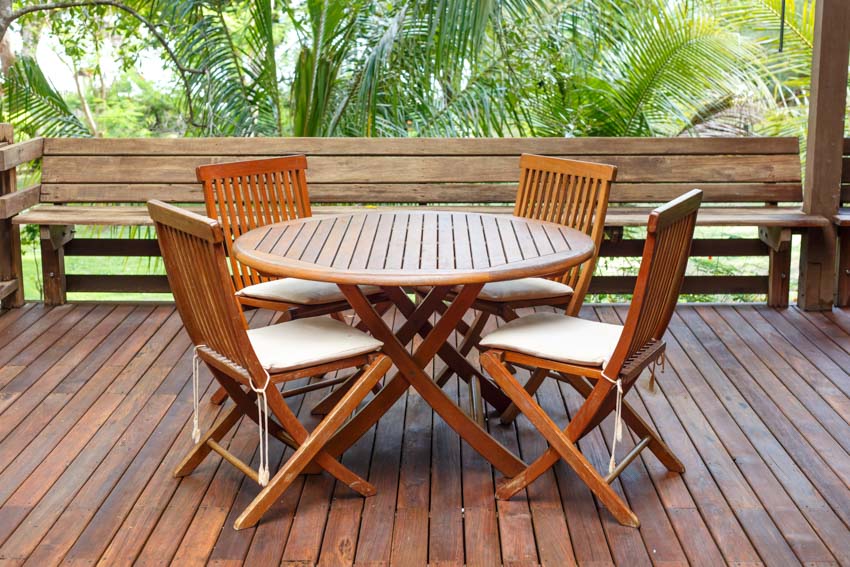
After being polished, it looks very appealing and will not be harmed by dry rots or white ants. It is unlikely to damage metal fasteners and does not compress considerably.
Teak is, in fact, among the most popular forms of timber not only in India but also worldwide, and it should only be used for premium applications. It can be mostly seen throughout Southern and Central India.
Teak (Tectona grandis) is physically suggestive of oak, but it is lighter and more uniform . Its color varies from a yellow to a dark goldenbrown. – Sculpture in Wood, Jack C. Rich
Moreover, teak is an incredibly strong kind of hardwood with a fine grain that contains a lot of silica as well as natural oil. It is one of the toughest, hardest, and most sustainable of all the hardwoods. Moreover, it is quite resistant to the impacts of the scorching sun, rainfall, ice, or snow.
Irrespective of the setting, teak for indoor or outdoor furnishing necessitates minimal to zero maintenance. Due to its unique combination of qualities, it is the best timber for all outdoor applications and has long been a favorite among boatmakers.
Teak has become a luxurious material preference for architects and designers of resorts, hotels, company headquarters, and luxury houses.
Previously, certain types of teak wood were only found on exquisite ships and in the most opulent estates. In addition to its inherent beauty, teak is among the most precious timbers you can use for indoor home embellishments.
Advantages of Teak Lumber
• Outstanding Visual Appeal: Straight graining gives teak furnishings a beautiful appearance. In contrast to embellishments constructed from plywood or fiberboard, teak is smooth to the touch and displays a rich brown hue after getting polished.
• Low-Maintenance: You are not required to constantly monitor your teak accent piece because it is structurally sound and resistant to issues that typically affect typical woods. This wooden furniture only has to be cleaned with a lint-free fabric. The surface of the teak interior decor may be completely cleaned of all the dust and filth in a matter of seconds.
• Paramount Durability: Pieces of home embellishments made out of teak can last a very long time; some pieces have lasted for over 10 decades. In addition, teak is not affected by moisture.
• Excellent Rot and Decay Resistance: Teak creates extremely long-lasting and rot-resistant furnishings due to its considerable density and rich oil content.
Uses of Teak Lumber
• Indoor Embellishments: All types of tables, bed frames, couch frameworks, wooden sofas, chairs, desks, cabinets, TV stands, nightstands, bar stools
• Outdoor Furniture: Rocking chairs, outdoor dining tables, and chairs, outdoor chaise
Marandi Wood
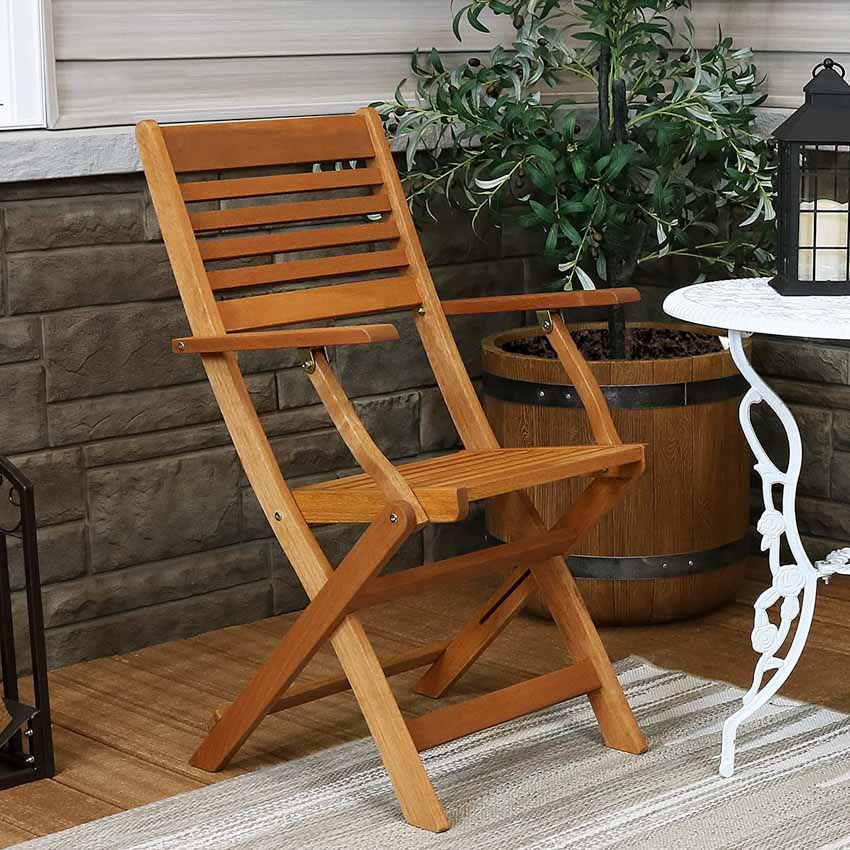
Marandi wood is a type of hardwood that is both long-lasting and water-resistant. It has a lovely aesthetic and remarkable efficiency.
This material is popular among Indian homeowners and designers since it is easy to handle, work with, and polish. Polishing can provide a smooth surface that is termite-resistant.
Moreover, Marandi can also be readily shaped to create different furnishing pieces and wooden accessories. It is extensively used in India, but the majority of it is sourced from Malaysia. It is also a lot lighter than other kinds of hardwood.
Advantages of Marandi Lumber
• Decay-Resistant: Termites, rot, and pests are not inclined to attack Marandi wood. Hence, Marandi is ideal for certain pieces of outdoor home embellishments.
• Appealing Texture: This material has a light, smooth, and homogeneous texture, which makes it a suitable option for accent embellishments.
• Low Maintenance and Unique Beauty: Among the various forms of common lumber for home embellishments, Marandi necessitates minimal maintenance and has a pleasing aesthetic appeal.
Uses
Marandi Lumber
• Indoor Furniture: Coffee table, kid’s chair, bedside table, drawers, shoe racks, and any indoor furniture piece that will not carry a heavy load
• Wooden Accessories: Wooden sculptures and other decorative items
Sissoo Wood
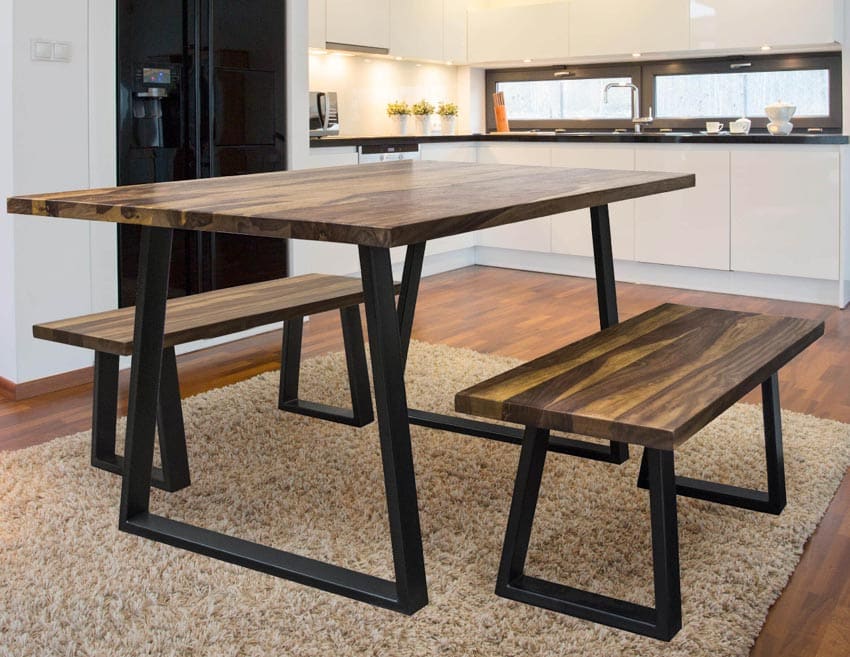
Sissoo, also known as Sheesham, is a popular species of lumber for furniture in India. It is indeed a solid material that can be polished and finished in a variety of ways.
Despite being one of the costliest wood in India, Sissoo wood is widely used because of its termite-resistant qualities, durability, and adaptability.
This mateiral is also used to create high-quality types of furniture styles, such as kitchen cabinets, couches, and even hardwood flooring. Furthermore, Sissoo is commonly found in Southern India and is employed in musical instruments as well.
Sissoo is derived from the Dalbergia Sissoo tree, often known as the Penny leaf tree. It is categorized as hardwood and is extremely sturdy and long-lasting.
It is compatible with all types of finishing, glues, and machines. Sissoo is used to construct top-quality beds since it is a highly stable wood.
Advantages of Sissoo Lumber
• Perfect for Premium Beds: Sissoo has emerged as a model that is associated with sumptuous, high-end furniture. It has a vibrant reddish tone and a unique texture that gives a new depth to any room.
Sissoo has long been used to construct elegant furniture, therefore it may be utilized to precisely make premium beds that can withstand a significant amount of abuse.
• Produces Uniquely Designed Furniture: Each piece of Sissoo furniture boasts a unique hue and can be effortlessly hand-waxed to get a smooth appearance.
• Durable and Long-Lasting: Sissoo is very long-lasting and resistant to dry-wood termites. Because it does not crack or warp, it is often used to create cabinets and other furniture.
Uses of Sissoo Lumber
• Indoor Furniture: Bed frames, table, dining room chairs, sofas, kitchen cabinets, drawers
• Other Wooden Objects: Musical instruments, carved wooden sculptures, and other wood-turned items
Rosewood
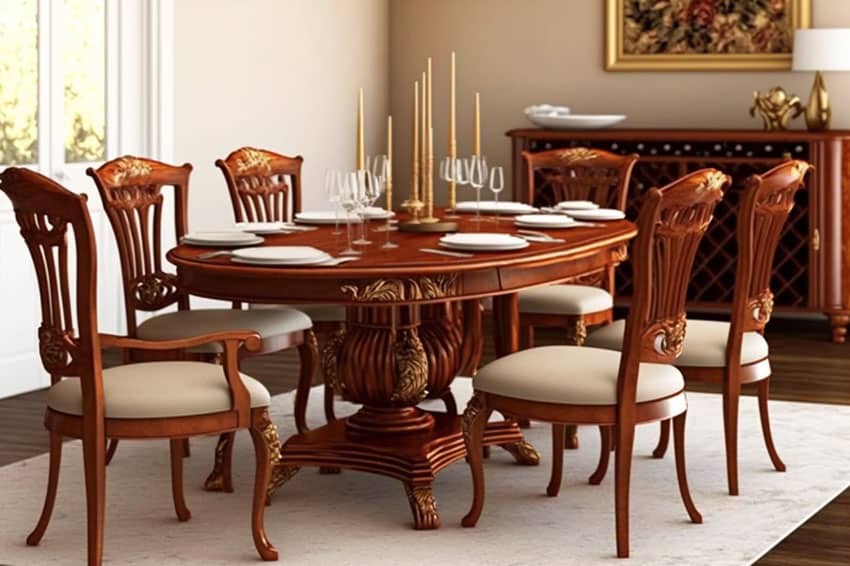
It’s commonly found in Karnataka, Kerala, Orissa, and Tamil Nadu. Indian rosewood is a tree that produces rare timber. It refers to various highly colored timbers, commonly brown with dark speckles.
Due to its durability, color, and capability to absorb polish, Indian rosewood is employed not only in producing indoor furniture but also in developing other important objects.
It is also utilized in the manufacture of musical instruments like guitars and violins. It can also be sculpted into pens, chess parts, furniture, flooring, and many more.
Advantages of Rosewood
• Sufficient Strength: Rosewood has significant crushing and bending capabilities, which contribute to the soundness of furniture carved from it.
• Naturally Beautiful Wood Grain: Numerous musical instruments and ornamental objects can be created due to the wonderful grain appearance of rosewood.
Uses of Rosewood
• Indoor Furniture: Small table, coffee table, dining room chair, drawers, rack, cabinets
• Other Wooden Objects: Wooden sculptures, rulers, guitars, violin
Sandalwood
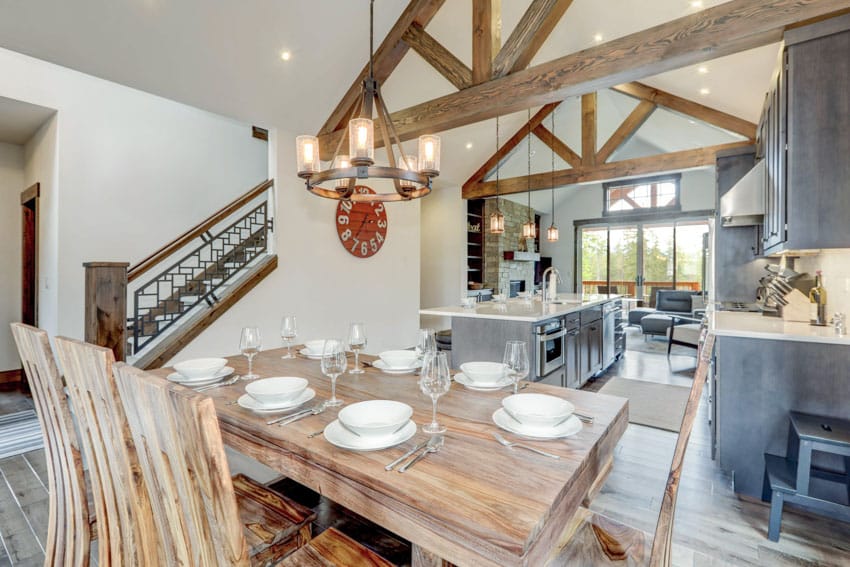
Sandalwood is primarily known to originate in Japan, China, Myanmar, and the majority of other East Asian countries. However, its demand is primarily in the international market.
Moreover, sandalwood’s main applications include being a wonderful material for use on premium furniture and percussion equipment as well as being used in the manufacturing of perfumes and aromas.
Nevertheless, it is the growth patterns of Sandalwood that make it so valuable in the manufacturing of furniture. Sandalwood has been associated with sacred entities in some religions. The Indian sandalwood is utilized to worship the god Shiva, making it exceedingly holy.
Advantages of Sandalwood
• Produces Unique Furniture Due to its Everlasting Aroma: This feature makes sandalwood furniture extra unique. Imagine having furniture that is always fragrant – that would be so cool.
• Can Increase the Value of Your Home: Although there are various pieces of sandalwood furniture, finding one would be difficult, and only a few products are made each year. This means having Sandalwood furniture can raise the value of your home.
Uses of Sandalwood
• Indoor Furniture: Kitchen cabinets, sofa, bookcases, shelves, racks, tables
• Wooden Carvings: Religious figures, sculptures, home decorations
Mahogany Wood
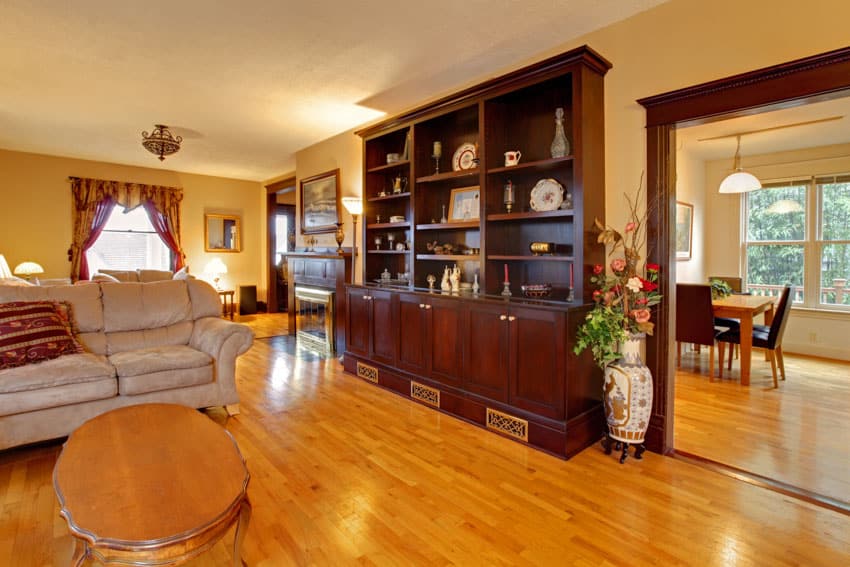
It is a water-resistant wood primarily located in Kerala, Assam, and Bengal. The aforementioned features make it possible to create fine outdoor wooden furniture.
Furthermore, mahogany furniture is less prone to compress, bend, or swell as the weather fluctuates because of its stability. Mahogany is a natural option for doors as well as indoor furniture like bed frames and kitchen cabinets due to its high-quality texture and deep hue.
Mahogany pores readily take paint, giving it a smooth and perfect appearance. It is used to make a variety of furniture as well as decorative objects. Those searching for furniture with a shiny finish should consider this timber type.
Advantages of Mahogany Lumber
• Ultimate Resistance to Different Elements: Mahogany is strong and impervious to pests, dampness, and temperature fluctuations, making it perfect for outdoor furniture.
• Very Workable: Mahogany works effectively by hand and even with manual tools, sands readily, twists, accepts glues and stains, and finishes well.
• Interesting Appearance: The heartwood colors of mahogany range from delicate pinkish-brown to dark brown. This color deepens as it ages.
Mahogany grain has a wonderfully flawless medium texture and natural sheen and can be straight, intertwined, uneven, or wavy.
Uses of Mahogany Lumber
• Indoor Furniture: Tables, sofas, bed frames, chairs, and any indoor home embellishments piece you can think of
• Outdoor Furniture: Outdoor dining table and dining chairs, chaises, outdoor sofas, outdoor coffee table
Oak Wood
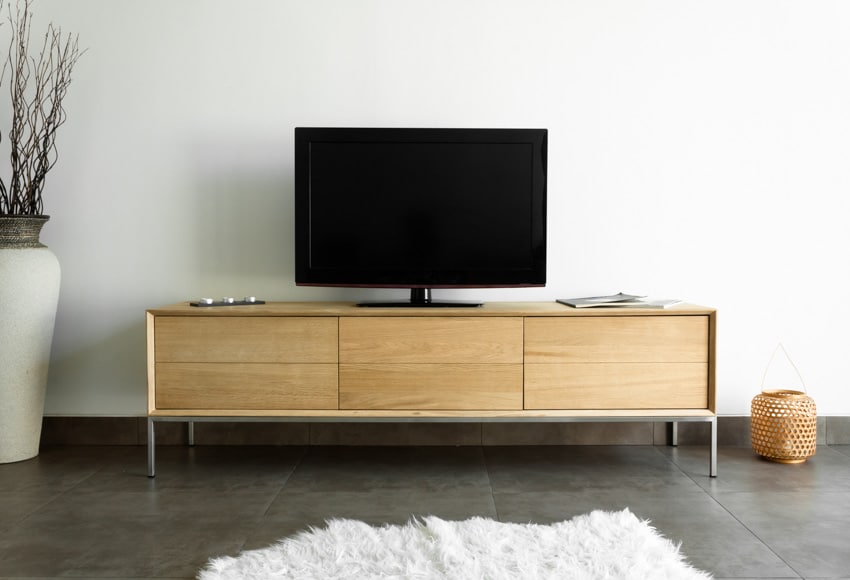
Indeed, oak is among the most practical options of lumber for dining tables or any common furnishings. In India, oak is less expensive than mahogany wood, making it excellent for low-cost furniture solutions.
The most prevalent types for furniture and other applications around the home are white and red oak. Both are magnificent options that, due to their durability, function well in bustling settings.
Advantages of Oak Lumber
• Maximum Versatility: Oak home embellishments come in a variety of styles. Whatever you select, it will look good in any home and décor.
• Very Durable: The most obvious advantage of oak home embellishments is its durability. It is much more durable than most hardwoods. It can sustain large loads for generations without losing its brilliant appearance. Since oak home embellishments last so long, you can pass it down to the coming generations.
• Timeless Appearance: A wide range of oak home embellishments that will never be out of fashion are available, from classic to stylish and modern pieces. The timeless character and style of oak furniture will complement your home’s permanently changing trends.
Uses of Oak Lumber
• Indoor Furniture: Beds, tables, chairs, nightstands, cabinets, closets, and any piece of indoor home embellishments you can think of
• Outdoor Furniture: Rocking chairs, outdoor tables, chairs, chaises
Deodar Wood
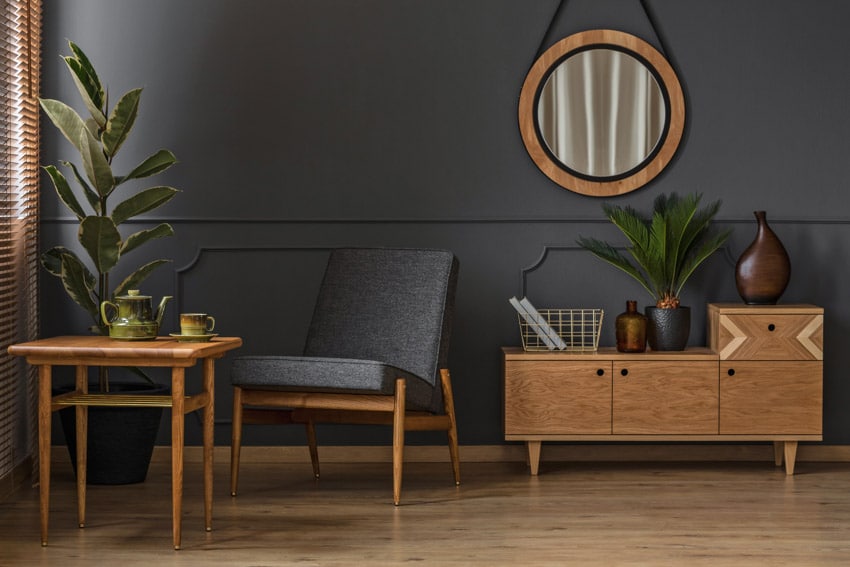
Deodar, which is native to the Himalayas, may be the ideal timber for home embellishments in India for cooler regions. This increases its resistance to low temperatures and makes it acceptable for usage in interiors.
Uttar Pradesh and Punjab are also home to deodar wood. Because it is close-grained, it can attain a neat and beautiful finish after deep polishing. This mayerial is also used to manufacture strong and long-lasting furniture. Because of its durability, it is a wise option. Nevertheless, it is its rot resistance that distinguishes it as a favorite.
Advantages of Deodar Lumber
• Durability and Rot Resistance: Deodar is indeed a tough and rot-resistant wood. Because this lumber is not susceptible to degradation caused by moisture or pests, it has a substantially longer lifespan.
• Incredible Color Absorption: Deodar takes colors effectively, making it an excellent choice for home embellishments and decorative items. Painting or staining it will be a breeze.
Uses of Deodar Lumber
• Certain Indoor Furniture Pieces: Accent chairs, drawers, kitchen cabinets, coffee tables, countertop cabinet doors
• Flooring: Indoor and patio floors
Satin Wood
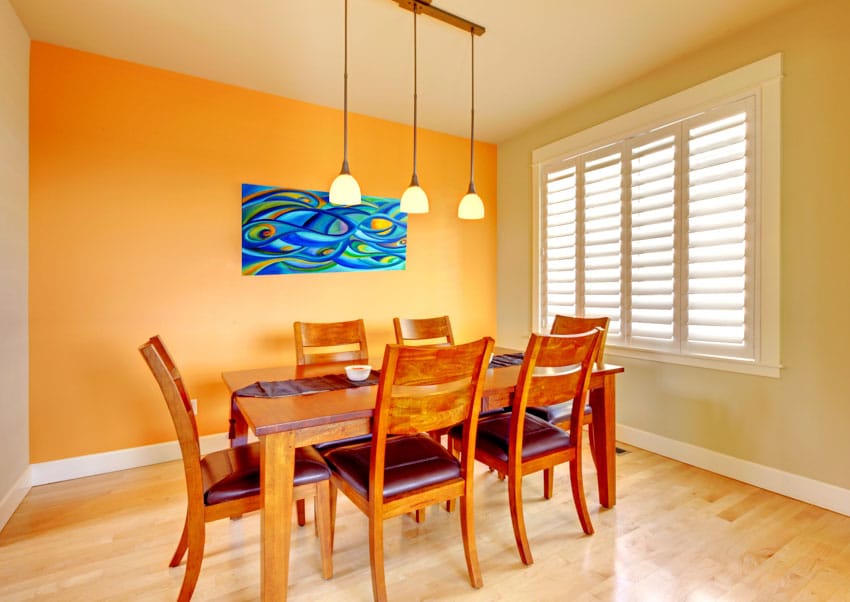
Aside from that, satinwood is strong and long-lasting. It has a shiny appearance that makes the material very appealing. This timber grows throughout Central as well as Southern India. It is likewise another lumber that is of high quality for furnishing production.
Advantages of Satinwood
• Low-Maintenance: Satinwood is simple to maintain. It provides a smooth surface and can obscure slight flaws. This material is ideal for high-traffic furniture and does not require daily cleaning.
• Long-Lasting: It lasts a long time and provides the perfect look or finish when combined with any polish of preference. Satinwood is also employed in the production of decorative items and high-end furniture.
Uses of Satinwood Lumber
• Indoor Furniture: Kitchen cabinets, outdoor dining table, countertop cabinet doors
• Other Wooden Objects: Wood-turned items, decorative wooden objects, sculptures, farming tools
Jackwood
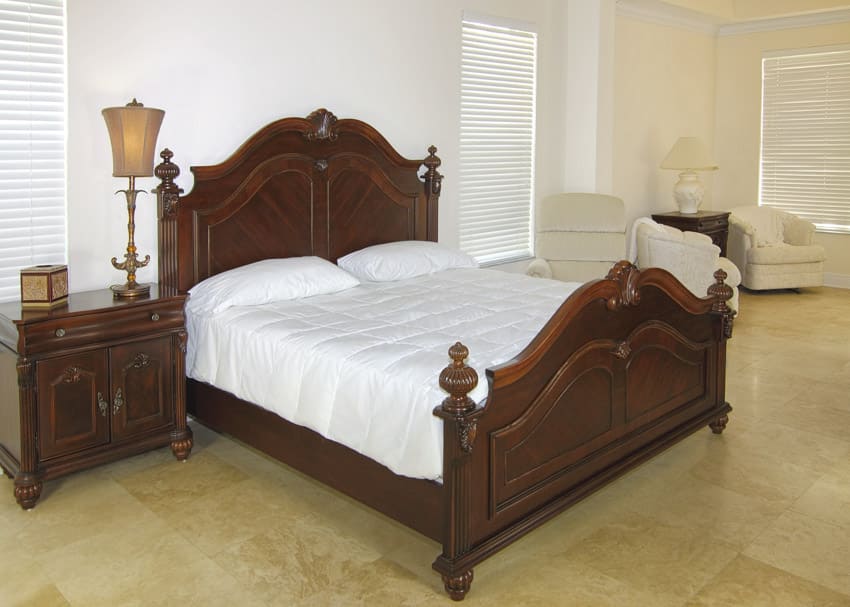
Generally, the woods in this category are used to build musical instruments as well as furnishings. Jackwood is a compact, fine-grained timber that is easy to work with. It is most common in Maharashtra, Karnataka, Kerala, and Tamil Nadu.
Advantages of Jackwood
• Uniformly Grained: It has a consistent grain and a nice finish.
• Simple to Work: It is readily carved and molded to make interior design embellishments and other items.
•Aesthetically Appealing: Jackwood is a popular material for manufacturing musical instruments and aesthetically pleasing accent furniture items because of its beauty.
Uses of Jackwood
• Indoor Furniture: Tables, cabinets, chairs, nightstands, drawers, bed frames
• Other Wooden Objects: Doors, musical instruments, wooden sculptures
Sal Wood
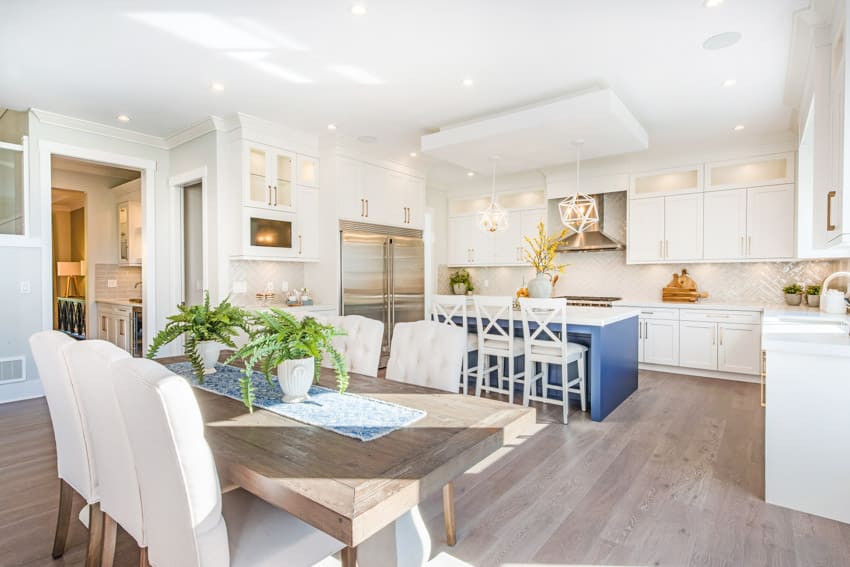
Furthermore, sal is termite- and fungus-resistant. Considering these features, many Indian householders believe sal timber to be one of the most practical furniture wood.
These qualities promote its ubiquitous use in the manufacture of indoor window frames, doors, and support beams.
Advantages of Sal Lumber
• Extremely Robust: Sal timber is great for making high-quality furnishing, wooden columns, and wooden framing.
• Decay Resistance: Sal timber resists fungi, white ants, and pests.
• Remarkable Structural Strength: Its robustness makes it a great option for supplying strength and reinforcement. Sal is used to manufacture doors, heaps, and wooden frames. It can also be used to make little pieces of decor.
Uses of Sal Lumber
• Indoor Furniture: Tables, kitchen cabinets, chairs
• Home Parts: Door frames, wooden beams
Mulberry Wood
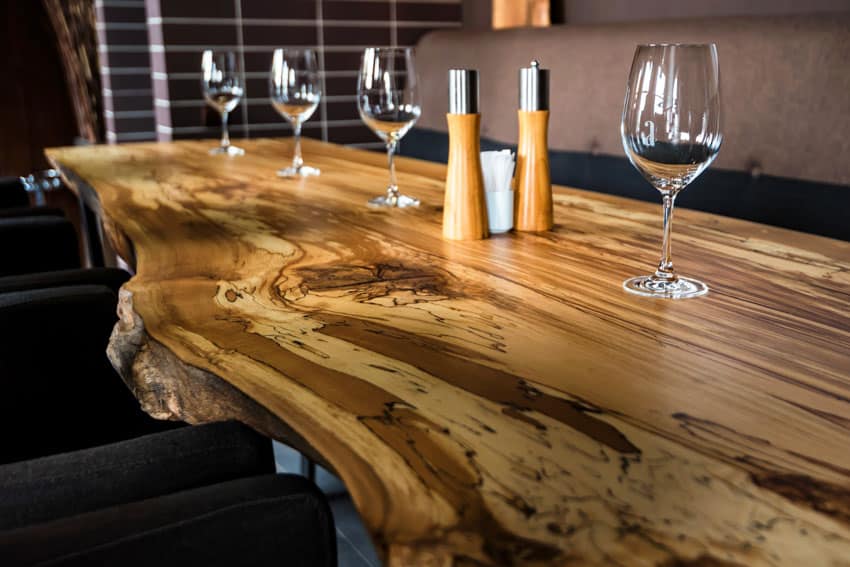
Mulberry has a wide range of color tones and is a durable hardwood type. If you choose a specific hue of lumber for your furnishings, you can easily stain or paint your mulberry interior home embellishments to modify or enhance it.
Advantages of Mulberry Lumber
• Elasticity and Strength: Mulberry is both strong and flexible. It is easily molded, making it perfect for the production of finely formed home furnishings. It is simple to work with and may be used to create ornamental decor as well as useful products such as certain types of drawers and cupboards.
• Neat Finish: Mulberry produces visually appealing interior home embellishmentsdue to its visual appeal. It has a wider color range than other types of timber and can be utilized to achieve a suitable finish.
Uses of Mulberry Lumber
• Indoor Furniture: Cabinets, drawers, bookcases, tables, chairs
• Outdoor Objects: Fence posts, outdoor dining tables, and chairs
Coconut Wood
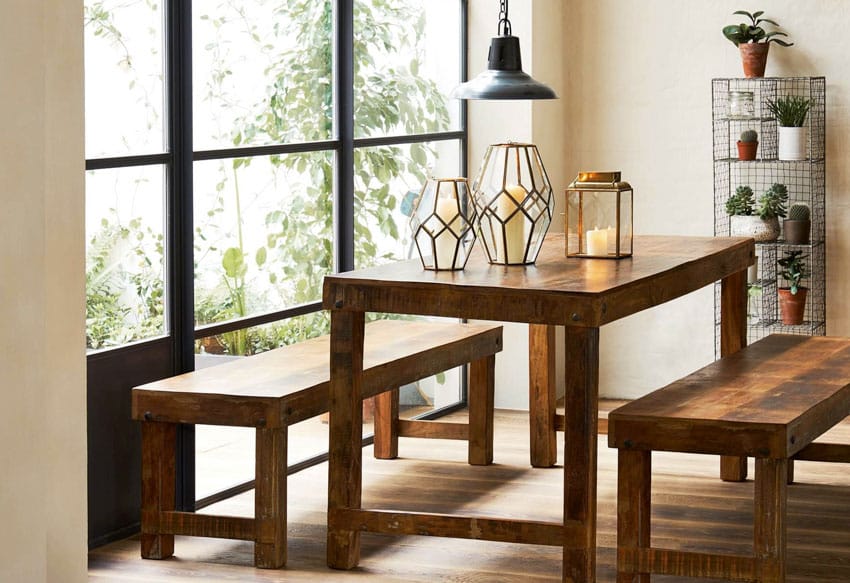
Moreover, coconut has a smaller footprint and lower density than other trees, allowing it to be employed as a structural element in building construction. Coconut lumber possesses a similar appearance to mahogany wood, with extremely similar colors.
Advantages of Coconut Lumber
•Exceedingly Sustainable: Coconut remains environmentally sustainable because of its carbon retention. Because coconut is a short-lived tropical species, logging does have a lower ecological impact when compared to several rainforest hardwood trees.
• Eye-Pleasing Appearance: Another characteristic of coconut is its inherently beautiful and distinct texture. It is an excellent material for accent furnishings.
Uses of Coconut Lumber
• Indoor Home Embellishments: Kitchen cabinets, dining tables and chairs, bed frames
• Outdoor Wooden Elements: Fence posts, wooden ceiling supports
Which Timber Is Best for Furniture in India?
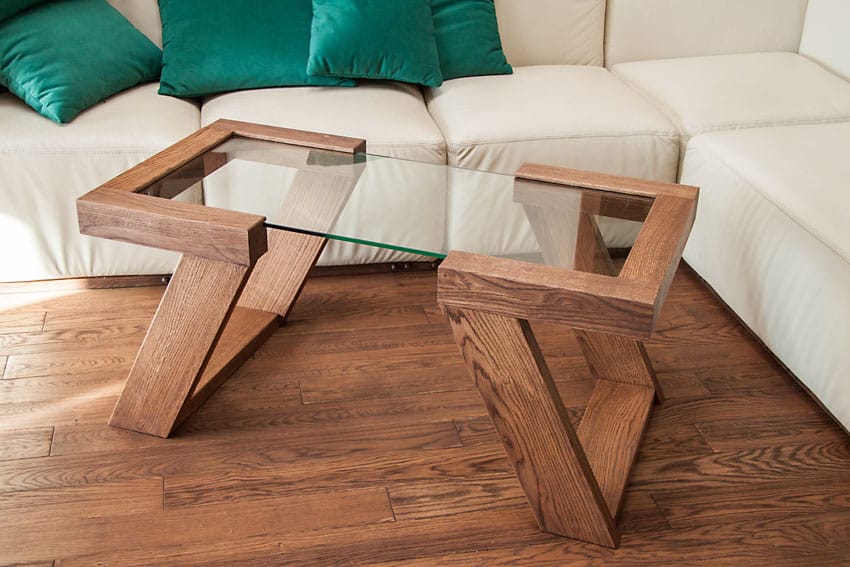
Teak interior home embellishments also gives a smooth texture and its brown color appears far superior to other hardwood types.
Decor pieces made out of teak also have a lifespan of approximately a century. It cannot be damaged even if you move houses or if there is a water leakage.
Because of its high density, teak wood is resistant to decay and rotting. This implies that the hardwood will be in superb condition for a long period.
See more related content in our article about alder wood furniture on this page.

